Explore the Best AI Image Gallery

The Impact of AI Images on Modern Design
Artificial Intelligence (AI) has permeated various aspects of our lives, and the world of design is no exception. From graphic design to product photography, AI-generated images are reshaping the creative landscape. This blog post will explore the impact of AI images on design, their potential uses, ethical considerations, and future trends that may define this evolving relationship between technology and creativity.
The Transformative Role of AI in Design
AI-generated images have revolutionized how designers approach their work. By harnessing algorithms capable of learning from vast databases of visual content, designers can now produce unique and sophisticated images in a fraction of the time it would have taken traditionally. This transformation allows for a more efficient workflow, enabling artists to focus on refining their concepts rather than spending exhaustive hours on manual execution.
Among the popular AI tools available today is OpenAI's DALL-E, which generates images from textual descriptions, allowing designers to visualize their thoughts instantly. Other notable AI platforms like DeepArt and Artbreeder enable users to experiment with various styles, merging artistic elements to create novel compositions. These tools not only enhance creativity but also empower a broader range of individuals to engage with design, democratizing the artistic process.
Potential Uses in Various Creative Fields
AI-generated imagery finds its application in numerous sectors, including:
- Advertising: Brands utilize AI to create personalized visuals that resonate with target audiences, optimizing ad campaigns for effectiveness.
- Fashion: AI can generate fashion designs based on current trends, assisting designers in forecasting styles or creating virtual garment displays.
- Gaming: Game developers analyze player preferences and generate immersive worlds and characters based on trending aesthetics.
- Product Design: Instead of starting from scratch, designers can use AI-generated prototypes to jumpstart their creative process.
- Architectural Visualization: AI allows architects to create realistic images of their designs, helping clients visualize structures before construction begins.
These applications not only enhance productivity but also foster innovation, as designers can leverage AI's computational power to explore possibilities previously constrained by manual techniques.
Ethical Considerations
As with any new technology, the rise of AI in design brings forth ethical questions that must be addressed. The primary concerns include:
- Intellectual Property: Who owns the rights to images created by AI? This ambiguity raises questions around copyright and originality.
- Quality vs. Quantity: While AI can generate images rapidly, questions arise about the artistry and quality of AI-generated content. Does speed compromise the depth of creativity?
- Job Displacement: As AI tools become more prevalent, concerns grow regarding the potential displacement of creative professionals. How can designers adapt to and coexist with advancing technology?
- Data Bias: AI systems learn from datasets, which can introduce biases. What implications does this have for representation in design, particularly regarding race and gender?
Addressing these ethical considerations is vital to ensure responsible use of AI technology while protecting the rights and interests of those in the creative field.
Future Trends in AI and Design
The marriage of AI and design is still in its infancy, yet its trajectory suggests an exciting future. Here are some trends to watch out for:
- Enhanced Integration: AI tools will likely be integrated into design software, facilitating seamless workflows for designers.
- Collaboration between Humans and Machines: The artist and AI partnership will evolve, with each bringing unique strengths to the creative process.
- Customization and Personalization: Businesses will increasingly use AI to tailor designs specific to consumer preferences, enhancing customer engagement.
- Greater Accessibility: AI will continue to democratize design, making it more accessible to individuals without formal training.
- Environmental Considerations: AI may also lead to sustainability in design practices by optimizing resource allocation and minimizing waste in production processes.
As we plunge deeper into the age of AI, its role in design will undoubtedly expand. Designers will need to adapt and evolve, embracing the advantages AI brings while addressing its challenges. The future of design is not about replacement but rather about collaboration and inspiration igniting a new wave of creativity that merges human intelligence with artificial capabilities.
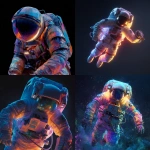
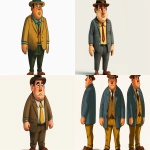
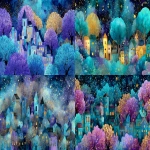

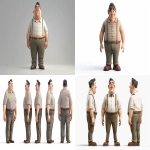

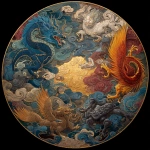
](https://images.ai-img.art/thumbnails/150/d08f607caf4a5c380defef68b778febb8911e8e51e51927b09ed67880bd3084b.webp)
](https://images.ai-img.art/thumbnails/150/f3411154f4c743a26f102ecfc985f3f6214e93b285748fac66c88f3b52f85b26.webp)


](https://images.ai-img.art/thumbnails/150/5487dcbcab0cd5702a67cc6819342ef56c05d0fc7730bfb7718ee291f10c3da3.webp)

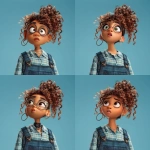



](https://images.ai-img.art/thumbnails/150/1871c145bfe0276c6e1bacf6ec0da6d2dae71370bf71674589af29a201acdd5f.webp)
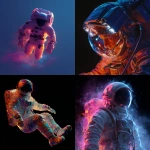
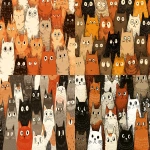




![**ultra detailed 8k cinematic black and white beauty portrait of a young woman from chest up, vertical frame, face, hands and hair filling the composition, smooth neutral grey studio background with soft dark vignette on the edges, center of the frame is her eye, lips and finger in a "shh" gesture oval symmetrical face with soft but well defined features, ultra smooth flawless skin, no pores, no wrinkles, perfect beauty retouch, straight elegant nose with soft highlight along the bridge and gentle shadow under the tip full sensuous lips with a sharp cupid’s bow, slightly parted, a thin bright glossy highlight strip on the lower lip emphasizing volume, subtle light reflection on the lip gloss one eye visible through a gap between fingers, other eye mostly hidden by the upper hand, long thick eyelashes like fake lashes, small bright catchlight in the pupil, upper eyelid with smoky eye makeup, darker tone along lash line fading smoothly towards the brow, dark thick well shaped eyebrows, gently arched, not overdramatic dark wavy hair, big glossy waves falling down, one clear S-shaped wave on the right side of the frame, soft highlights along the strands to show texture, hair swept away from the cheeks so the face is not covered both hands in thin semi-transparent black gloves up to the forearm, upper hand placed horizontally across the upper face, back of the hand towards camera, fingers slightly spread so that one finger is above the brows and another lower finger creates a narrow gap that reveals the eye, fingertips long and tapered, sharp stiletto-like nails visible under the sheer fabric, subtle darker seams along the fingers and glove edges lower hand bent so that the index finger is vertical and gently touching the center of the lips in a classic "shhh" pose, [...]** - Image #4 <@1264899319799222315>](https://images.ai-img.art/thumbnails/150/8507c113aa12343ebd50af4ab9c637a6cf1acf21c55772271eb6a66bb04fa39c.webp)




![**ultra detailed 8k cinematic black and white beauty portrait of a young woman from chest up, vertical frame, face, hands and hair filling the composition, smooth neutral grey studio background with soft dark vignette on the edges, center of the frame is her eye, lips and finger in a "shh" gesture oval symmetrical face with soft but well defined features, ultra smooth flawless skin, no pores, no wrinkles, perfect beauty retouch, straight elegant nose with soft highlight along the bridge and gentle shadow under the tip full sensuous lips with a sharp cupid’s bow, slightly parted, a thin bright glossy highlight strip on the lower lip emphasizing volume, subtle light reflection on the lip gloss one eye visible through a gap between fingers, other eye mostly hidden by the upper hand, long thick eyelashes like fake lashes, small bright catchlight in the pupil, upper eyelid with smoky eye makeup, darker tone along lash line fading smoothly towards the brow, dark thick well shaped eyebrows, gently arched, not overdramatic dark wavy hair, big glossy waves falling down, one clear S-shaped wave on the right side of the frame, soft highlights along the strands to show texture, hair swept away from the cheeks so the face is not covered both hands in thin semi-transparent black gloves up to the forearm, upper hand placed horizontally across the upper face, back of the hand towards camera, fingers slightly spread so that one finger is above the brows and another lower finger creates a narrow gap that reveals the eye, fingertips long and tapered, sharp stiletto-like nails visible under the sheer fabric, subtle darker seams along the fingers and glove edges lower hand bent so that the index finger is vertical and gently touching the center of the lips in a classic "shhh" pose, [...]** - Image #3 <@1264899319799222315>](https://images.ai-img.art/thumbnails/150/4c03a422708b372b43caaee1e2929933c40f0a13dc069beeeb228a60b126223b.webp)
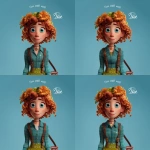
![**ultra detailed 8k cinematic black and white beauty portrait of a young woman from chest up, vertical frame, face, hands and hair filling the composition, smooth neutral grey studio background with soft dark vignette on the edges, center of the frame is her eye, lips and finger in a "shh" gesture oval symmetrical face with soft but well defined features, ultra smooth flawless skin, no pores, no wrinkles, perfect beauty retouch, straight elegant nose with soft highlight along the bridge and gentle shadow under the tip full sensuous lips with a sharp cupid’s bow, slightly parted, a thin bright glossy highlight strip on the lower lip emphasizing volume, subtle light reflection on the lip gloss one eye visible through a gap between fingers, other eye mostly hidden by the upper hand, long thick eyelashes like fake lashes, small bright catchlight in the pupil, upper eyelid with smoky eye makeup, darker tone along lash line fading smoothly towards the brow, dark thick well shaped eyebrows, gently arched, not overdramatic dark wavy hair, big glossy waves falling down, one clear S-shaped wave on the right side of the frame, soft highlights along the strands to show texture, hair swept away from the cheeks so the face is not covered both hands in thin semi-transparent black gloves up to the forearm, upper hand placed horizontally across the upper face, back of the hand towards camera, fingers slightly spread so that one finger is above the brows and another lower finger creates a narrow gap that reveals the eye, fingertips long and tapered, sharp stiletto-like nails visible under the sheer fabric, subtle darker seams along the fingers and glove edges lower hand bent so that the index finger is vertical and gently touching the center of the lips in a classic "shhh" pose, [...]** - Image #2 <@1264899319799222315>](https://images.ai-img.art/thumbnails/150/d87499f6bdc5a4a822aea4674654f70073b052542a1aaa1d08461a13ca2e07f9.webp)


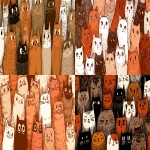
](https://images.ai-img.art/thumbnails/150/4f3d83c4b1d979b5be00f4ea80d67b71c0335bc1163e692d738e553ac37709e5.webp)
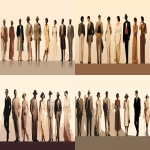
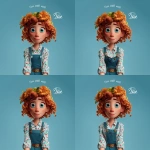

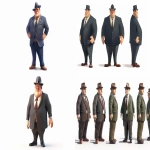
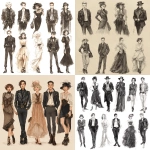
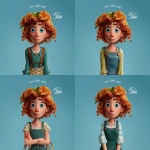
](https://images.ai-img.art/thumbnails/150/7c4350a99935771fe343a7ae65c780cf4cd6b861e69cdc32bd58a3a92fb2476f.webp)
![**ultra detailed 8k cinematic black and white beauty portrait of a young woman from chest up, vertical frame, face, hands and hair filling the composition, smooth neutral grey studio background with soft dark vignette on the edges, center of the frame is her eye, lips and finger in a "shh" gesture oval symmetrical face with soft but well defined features, ultra smooth flawless skin, no pores, no wrinkles, perfect beauty retouch, straight elegant nose with soft highlight along the bridge and gentle shadow under the tip full sensuous lips with a sharp cupid’s bow, slightly parted, a thin bright glossy highlight strip on the lower lip emphasizing volume, subtle light reflection on the lip gloss one eye visible through a gap between fingers, other eye mostly hidden by the upper hand, long thick eyelashes like fake lashes, small bright catchlight in the pupil, upper eyelid with smoky eye makeup, darker tone along lash line fading smoothly towards the brow, dark thick well shaped eyebrows, gently arched, not overdramatic dark wavy hair, big glossy waves falling down, one clear S-shaped wave on the right side of the frame, soft highlights along the strands to show texture, hair swept away from the cheeks so the face is not covered both hands in thin semi-transparent black gloves up to the forearm, upper hand placed horizontally across the upper face, back of the hand towards camera, fingers slightly spread so that one finger is above the brows and another lower finger creates a narrow gap that reveals the eye, fingertips long and tapered, sharp stiletto-like nails visible under the sheer fabric, subtle darker seams along the fingers and glove edges lower hand bent so that the index finger is vertical and gently touching the center of the lips in a classic "shhh" pose, [...]** - Image #1 <@1264899319799222315>](https://images.ai-img.art/thumbnails/150/ff5a24c7c060f5350508823c406c28c9596aea4e37eefb60abc0f37504a37383.webp)




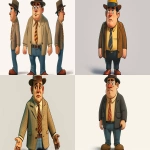
](https://images.ai-img.art/thumbnails/150/e07ad2e7379a835127482b0fd3176192c001c90e68a85b4315cf482b6a3f5ea5.webp)